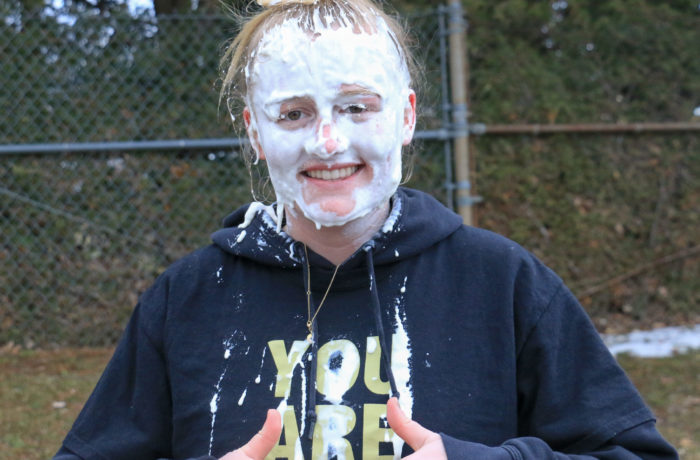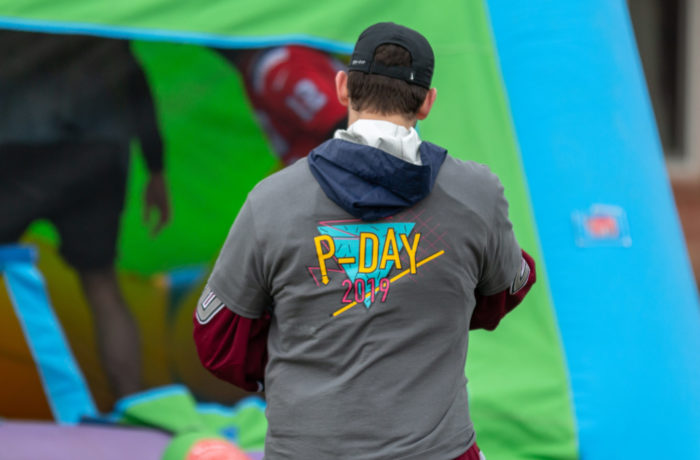By Megan Robinson
Staff Writer
St. Michael’s College has reported three confirmed cases of the mumps since Jan. 20 and is encouraging students to get a booster shot to their vaccine. The Vermont Department of Health has also confirmed that 10 UVM students were diagnosed with the mumps as of Feb. 22, said Annie Stevens, Vice Provost for Student Affairs, and Michelle Paavola, Acting Director, Student Health Services in an email.
Matthew Cotter ’19, was diagnosed with the mumps in mid-January at the UVM Medical Center, in Burlington. “I had a big neck, and it hurt when I ate, especially when I had sour things or if I put a hot compress on it,” he said. “I also had a fever of about 101 degrees.”
Cotter was originally misdiagnosed with an infection of his glands and was sent back to campus, where he did not attend his classes, and remained in his room. He said he continued to feel sick for two days and returned to the hospital where they diagnosed him with the mumps. He went home for about a week until he felt symptom free.
“The mumps is a viral illness that causes symptoms similar to a cold or flu,” said Mary Masson, director of student health services, said in an email. “Symptoms can include fever, headache, and loss of appetite. The illness causes the swelling of the salivary glands or parotid glands which are found along the check and jaw,” Masson said.
In some cases, the disease can become serious. Laura Ann Nicolai, Deputy State Epidemiologist for Infectious Disease, said, “Long term effects including sterility following Orchitis (swelling of the testicles) [are] rare. In the pre-vaccine era, permanent deafness caused by mumps occurred in 1 of 20,000 infected persons.” In the U.S., from 1966–1971, there were two deaths per 10,000 mumps cases, and there have been no reported deaths since, Nicolai said.
“Mumps is spread from person to person via droplets of saliva or mucus from the mouth, nose or throat. This is what makes it so contagious in the college setting where people are sharing drinking and eating utensils and are often in very close contact with each other,” Masson said.
Persons with the illness are most contagious two days before they notice the swelling, according to the Vermont Department of Health advisory template. It takes about two to three weeks to transmit mumps after being exposed to the virus. The illness typically lasts around five days. Dr. J. Jacob Enser, University of Vermont 2nd Year Infectious Disease Fellow, spoke of preventative measures against contracting the disease. “The extra vaccine helps reduce your chances of getting the mumps by about 75-90 percent even if you’re walking around campus and there’s an outbreak going on,” Enser said. “If you’re exposed to someone who has the mumps, the vaccine decreases your chances by about 50 percent.” He said it’s important take precautions and wash your hands because the mumps can be indirectly spread while handling different items such as food or money.
The Bergeron Wellness Center, the Centers for Disease Control and Prevention, and the Vermont Department of Health Department recommended that students receive a third dose of MMR (Measles, Mumps, and Rubella) vaccine.
In February, the Vermont Department of Health provided vaccinations for two days at St. Michael’s College, in the Dion Family Student Center. The Vermont Department of Health said that 450 doses were administered.
“Vaccination is wonderful, it is the best way to prevent the mumps, but behavioral practices go a long way in helping prevent the spread of mumps as well as other viral illnesses,” Nicolai said. “By washing your hands, not sharing things like drinks, e-cigs, or lip balm helps limit the chances.”


